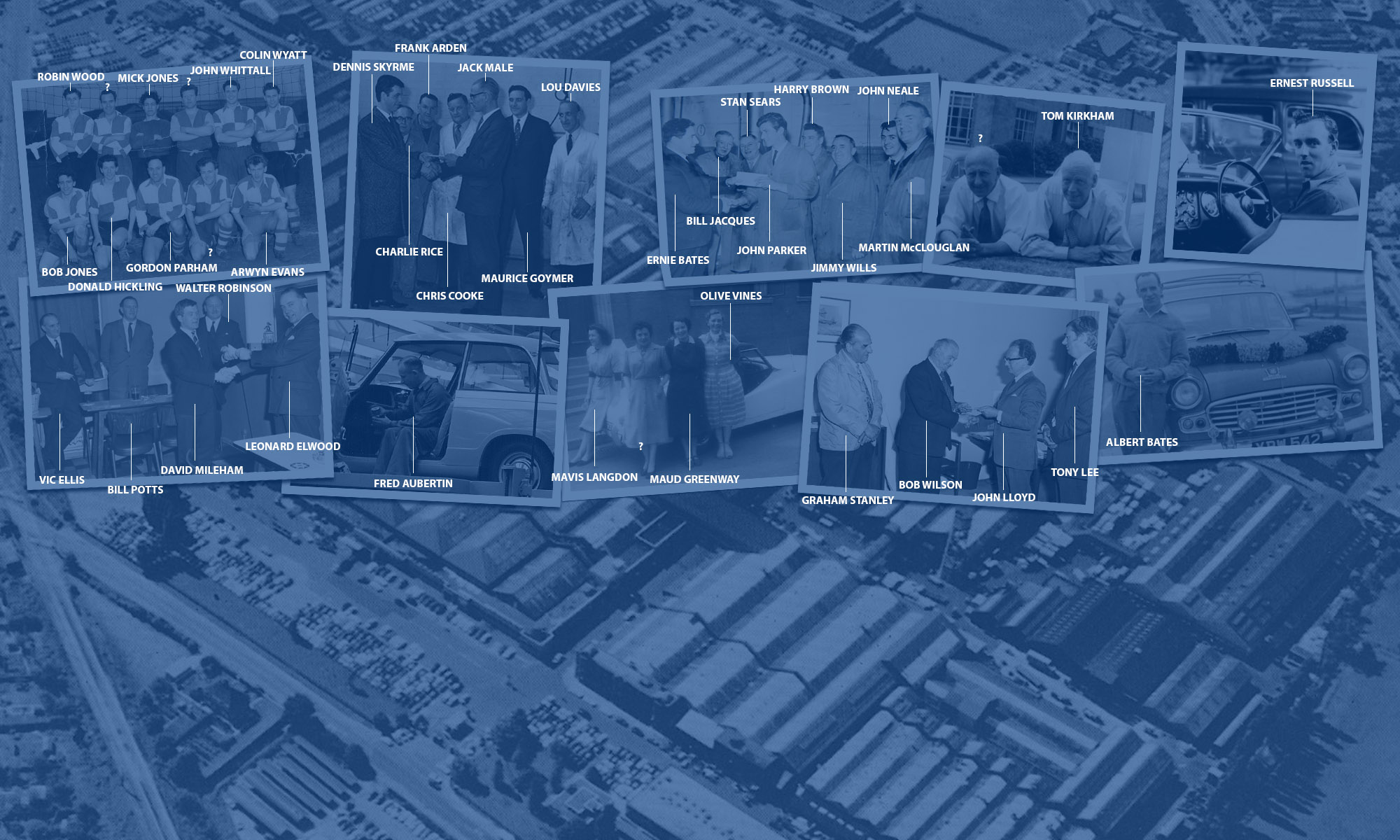Sir John Paul Black (10 February 1895 – 24 December 1965)
Chairman and Managing Director of the Standard Motor Company Ltd
(Mini biography published in 1951)
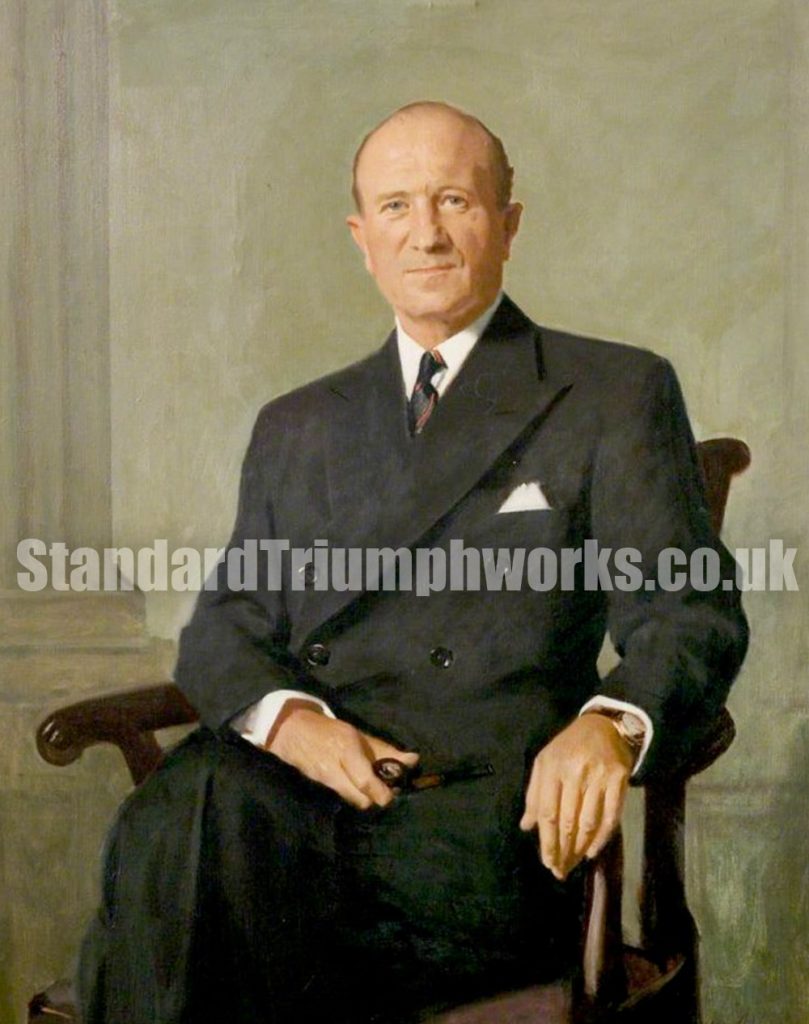
As Deputy Chairman and Managing Director of the Standard Motor Company Ltd, Sir John Black, at its head for twenty-four years, has been its inspiration and drive. From insolvency and thirty-four cars a week in 1929 he has brought it to a £47,000,000 turnover and an output of over 135,000 cars and tractors in I95I. With one of the finest motorcar factories outside USA, he nevertheless believes that the most important element in the company’s balance sheet is the harmonious relationship between management and men. He commends Standard’s new and revolutionary incentive wage scheme as the finest means of speeding production by 25 per cent throughout Britain.
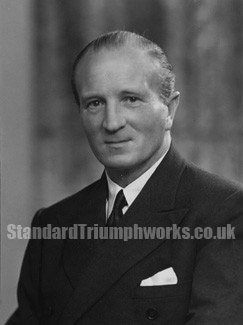
If history could be re-written in terms of achievement and industry rather than in terms of war and succession, it would be a work of the highest national importance. The times are ripe for it.
It would teach the school children of today – the managers and men of tomorrow – that industry’s battles are not less urgent because unsung, nor its defeats less calamitous in terms of national prestige and economy, nor its victories less inspiring because the territory fought over is measured in square feet instead of Continents. It would teach the daily bloodless battles fought for empires far exceeding national limits, embracing the markets of the world. It would teach that bad bosses, like bad generals, drain the nation of its lifeblood and bankrupt it with strife and suspicion. That good bosses, like good generals, are confident, farsighted, and that their men are disciplined and trained and aware of what they are fighting for. It would teach that the fellowship and pride of a great factory is no less binding than the fellowship and pride of a great regiment. It would teach, by fact and figures and ruthless logic, the chaos and failure of bad or stubborn management, and of defeats turned to victory by guts and decision. It would warn and inspire by example, large and small. And in less than a decade it would put faulty management on its toes or out on its ear, because the nation’s strength would be measured not in terms of dead generals but of live industrial leadership.
Re-written on these terms, the Standard Motor Company, of Coventry, might well find itself rated as a public holiday, for in the industrial field its victories are resounding. Indeed, they are so numerous as to be confusing. In each advance, success has been due to the general-ship of the man at the head who took over in 1929 when the Company was not only defeated but in rout.
The Standard Motor Company Limited was founded in 1903 for the sole purpose of manufacturing motorcars, unlike most car firms that developed on the cycle or kindred industries. The first Standard car, a single cylinder engine of about 6 hp, was advanced for its time, having a shaft drive and a three-speed gearbox. Moreover, the rear seats were entered from the side and not the back as was usual on early cars. In 1912 it introduced one of the first light cars, a 9.5 hp 4-cylinder, selling at about £200. In the 1914-18 war, they made munitions and the then famous RE8 aeroplane. After the war they had considerable success with revised versions of their pre-war car but were unable to weather the 1926 trade slump, and things went from bad to worse till in 1929 the position was desperate.
That was the year in which a young man in his early thirties came from Humber Hillman to take over an almost derelict works, and with the coming of Captain J P Black, the Standard Motor Company as it is known today begins. The works he took over was turning out a bare thirty-four cars a week, was hopelessly indebted to the bank, besieged of by creditors, and losing money hourly. Those who were there then remember him as walking about the shops for days on end, lost in thought. When he had studied the situation to his satisfaction, he put up his new scheme. His first year turned a steady loss into a small profit. Here he was at the age of 34, Director and General Manager in sole administrative control, asking and getting a free hand in regard to policy and management. In his own words, ” I did not desire to participate in the profits until I had earned 6 per cent for the shareholders. But once I had built it to that 6 per cent I made it clear that I expected to be treated very handsomely indeed. I wanted no security. I took a small salary and I refused to sign any contract.” He recalls that year the turnover was £5,000,000. “We thought we had done miracles.” Last year it was £47,000,000. In 1939, ten years from the day he joined the firm, the thirty-four cars a week had become 50,000 cars a year. Today the original Canley factory of 524,655 sq.ft has become the Canley factory, the Banner Lane factory, and the Fletchamstead factory, covering in all 2,700,000 sq.ft and 205 acres. Turnover per month is £4,000,000. The three factories are planned and equipped to produce 100,000 cars and 100,000 tractors a year when working to full capacity. At present, due to acute steel shortages affecting all heavy industry, their average is 64,756 cars and 70,29I Ferguson tractors, a total of 135,047. In addition, vast numbers of spares and components are produced and shipped abroad to service their huge export trade. Car exports for March 1951 reached an all-time record for the Company with a shipment of 5,631 cars, or 90.08 per cent of output.
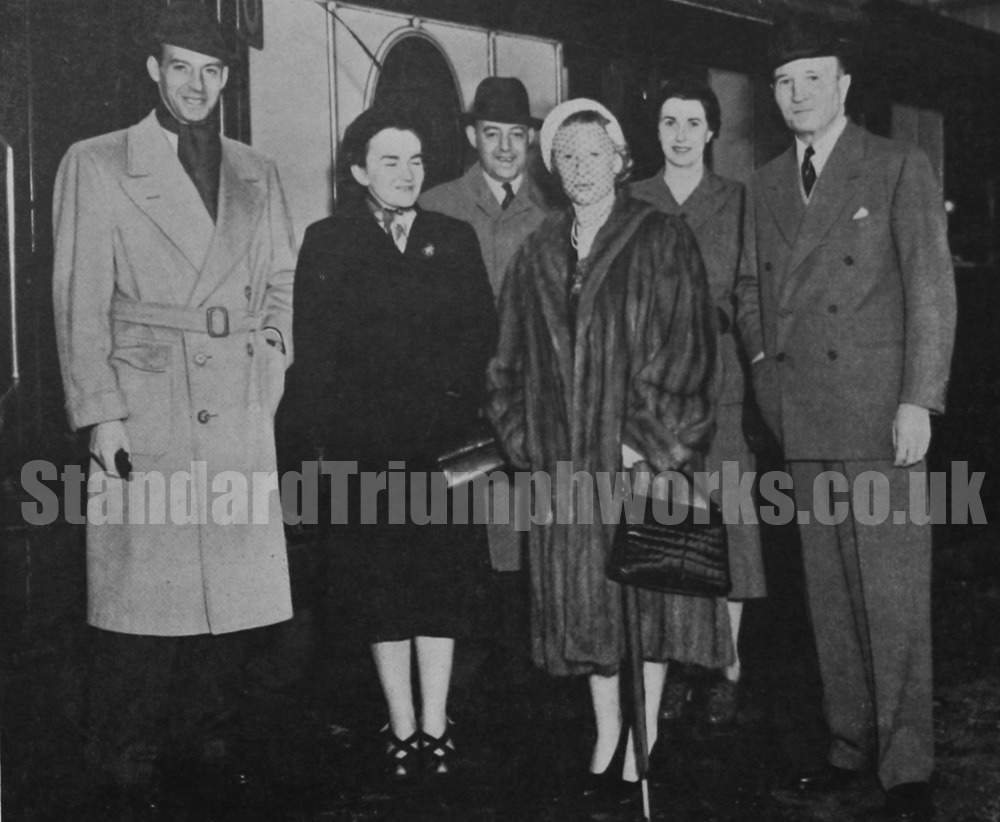
It was in gratitude to this record of service and success that in 1949 the shareholders of Standard Motors voted their Deputy Chairman and Managing Director 100,000 shares under a new agreement with the company, whereby should he sever connection with them he would not enter any car or tractor manufacturing business within a widely defined area for the rest of his life. On the face of it, remembering the years with a small salary until the shareholders’ 6 per cent was found, the hopeless losses that became a turnover of £47,000,000, the 524,655 sq.ft. that became 2,700,000, one hundred thousand pounds, the then value of the shares, seems a modest sum, but as a gesture it was charming. That it was taxed at 19/6 in the pound by retrospective legislation rushed through to circumvent “such cases” was an evil and unjust measure, putting the whim of a Chancellor of the Exchequer above and outside the law of the land. Rather than hand Sir Stafford Cripps £95,000, we wonder Sir John did not refuse the gift and hand the £100,000 back to the company. The difference between Sir John Black’s contribution to Standard Motors and the other members of the big five (Austin-Morris, Rootes Group, Ford Motors, Vauxhall) is that he did not merely start from scratch but from a handicap of debt and failure, and built up a company, which is not even his own, into a phenomenal production and profit maker. Sir John’s comment on all this is, “But you will notice I did not break my covenant with the shareholders, even though I did not get the gift under which it was entered into.”
Standard’s astonishing prosperity since the war rests on Sir John Black’s two decisions: (1) to manufacture the Ferguson tractor, (2) to scrap all existing Standard Motor cars and concentrate on one outstanding model for home and export markets – the Vanguard. As the end of the war approached Sir John foresaw that once again the aftermath of war would bring a shortage of food, and the mechanisation of the land would obviously be our most urgent need. He had gone as far as to start on the design of a light jeep tractor, and because of it, decided to have a look at what others had done. The tractor that impressed him was the Ferguson designed tractor produced by the Ford Motor Co. of America. He heard that Mr. Harry Ferguson was over here looking for someone to manufacture his tractors for the Eastern Hemisphere. Ferguson saw several motor manufacturers in this country. Over dinner at Claridge’s the deal was clinched, Standard Motors getting the manufacturing rights for the Ferguson tractor everywhere but in North, South, and Central America and the Philippines. The Banner Lane factory, one of the largest shadow factories to be built in Britain, was entirely re-equipped for the mass production of the Ferguson tractor. The first tractor was delivered in nine months and 10,000 after thirteen months. Production passed the 200,000 mark in June 1951.
The Vanguard was designed to be all things to all men: not ruinously extravagant for the British market yet powerful and roomy enough to appeal to overseas motorists. At last Sir John was putting to the test his credo that the only way Britain could ever obtain a share of the great motor markets of the World was to produce one model which could be sold in quantities both at home and abroad. The car must seat six in comfort; must cruise smoothly and safely at a mile a minute; must be always a little ahead of its time in looks and equipment, economical to run and low in price. An engine of 2 litres capacity was chosen because this would allow for a reasonable tax in Britain even if no change in the tax formula were introduced, but yet would permit 70 brake horse power. To achieve 80 miles an hour with such an engine would necessitate a power-weight loading around 3 bhp per cwt, so that the total weight must not greatly exceed 1 British ton. Next problem was road holding at high speeds. Independent front suspension was chosen, and for safety and ease of maintenance Lockheed hydraulic brakes. Stage by stage the Vanguard evolved. Riding in it one is struck by its remarkable smoothness at high speed, none of the sway and bounce of the usual “small car” which makes long journeys a misery, its roominess, the perfect placing and width of the windscreen, of the type found usually only on expensive cars, its excellent finish, and innumerable clever details all making for comfort and good tempered driving associated with more luxurious makes. The Vanguard was announced in July 1947, but the fuel crisis of February – March of that year held up production several months. A few days after the car was announced, the Chancellor of the Exchequer made a complete and sweeping change in the car tax – £10 per annum, irrespective of engine size. At that moment when the new tax was made public, the only British car suitable for world conditions and actually in existence was the Standard Vanguard. In 1951 alone 50,000 cars were exported from the Standard works.
In 1945 Standard Motors acquired the Triumph Motor Co Ltd, and manufactured the Triumph Mayflower, a light car designed for family motoring and the Triumph Renown, saloon and limousine, a car in the luxury class for looks but considerably below luxury price. These with the Vanguard estate car, 12 cwt delivery van and pick-up truck, are the only models Standard Motors make, following the ruthless pruning of pre-war shapes and types in the drive for high output and minimum costs.
Since the war over £10,000,000 has been spent on new makes and equipment. Some 4,500 new machines have been bought. Their fantastically high output per day is due to the fact that it is all the Vanguard engine in different bodies. Even the Ferguson Tractor incorporates Vanguard parts. The tractor required an engine very similar in size to that decided on for the Vanguard, and Sir John quickly realised that substantial reductions in costs could be achieved by modifying both engines so that the same tools and similar factory methods could be used in making the basic parts of both engines. The Vanguard car and Ferguson tractor engines are basically of the same type with four cylinders, overhead valves and easily replaceable cylinder liners of the “wet” type, but as they operate under entirely different conditions of car and tractor propulsion, there are many differences of detail and arrangement. The thing that matters is that there are enough similarities and so few fundamental differences that a production of 1,000 engines a day for car or tractor can be scheduled as a regular factory operation and this yields economies such as have seldom been achieved by any British motor manufacturer.
But it is not in vast production programmes and acreage and machine tools that the importance lies, but in the spirit which both made and animates the Company and its achievements. The drive and inspiration come directly from the character and quality of the remarkable man at the head, Sir John Black. It is typical of him that his suites of offices at Banner Lane are furnished with great elegance and beauty, for in such surroundings one can think, plan, and be at ease. It is also typical of him that his executives too sit in handsome offices, and that everywhere there is colour and light and charm in entrances and walls and curtains. It would be impossible to imagine him boorish to those around him or indifferent to his surroundings. The impression he gives is of quiet strength and great courtesy. Yet he does not suffer fools gladly, and confesses that each day he strives to be a little more tolerant. There is a certain communicable greatness about him, widely divergent men around him feel it, for one notices they mention the word frequently when speaking of him. Several of his highest executives have risen from the factory floor, from office boy, and apprentice. As Mr M Whifield, Director and General Manager, who has been with him since 1932 and came up through the works to his present position, said with humility that was touching: “He has a wonderful bent for seeing the worth in a man, even when the man himself does not know he has it in him. I was a shy and miserable boy but he drew me out and urged me on, as he has done with thousands of others. You couldn’t find a better boss. When there’s a big post to be filled in the factory, he makes a point of seeing that it is filled by men who have been with us since apprenticeship days. His greatest power is that if you are wrong he’ll chew you up, but he’ll never lose your friendship. If you are wrong and go and tell him you’re wrong, he’ll say: ‘Sit down and let’s sort this out.’ Mark you, if he finds out for himself, you get a different treatment”!
As for Sir John himself, it is typical when he speaks of his work that his pride is above all in the feeling that exists between management and men. “The biggest assets of our Company never appear on its balance sheet – the human element. You cannot chart or buy it. Right from the word go, when I first took over in 1929, I put all my energies into trying to drive out what the Company had been brought up on from 1903 – the fear of management. We had to work together, and those fellows had got to like and trust me as I had to like and trust them.” Those were the happy days that come only once in a boss’s life, when he knows every man by his Christian name. “Now” says Sir John “we employ some 12,000 people and they have always joined in the general prosperity of the Company by progressive increases in wages, improvements in working conditions, the backing of the individual with a higher amount of capital equipment to enable them to produce more.” Standard Motors have all their own social services, pensions, clubs, sports, ballroom, surgeries, etc., and an employees’ special fund, which is on their balance sheet. Without contributions of any sort from the employees the fund is now £690,000 and is devoted to widows, illness, special needs. It works out at 40-45 per cent of what they pay their shareholders; last year dividends were £323,000 and employees’ special fund £135,000.
This pride in the excellent relations between management and men at Standard Motors is no empty boast. One example will dispel any doubts about the men’s attitude to output. There is a certain American automatic gear cutting machine at Banner Lane which cuts one gear a minute or sixty an hour. A similar machine installed in another factory has caused strike after strike because the men will not tolerate what they consider unfair competition from a machine. But when it was installed at Banner Lane the men welcomed it as a means of stepping up production on their tractor output in which they all share. It does not reflect the stupidity of men, but the stupidity of management when men refuse to work labour saving machinery. Anything that will step up the production target is welcomed at Standard Motors because the higher the output the higher the share-out. Moreover, the Ferguson – Vanguard record breaking is due to a revolutionary system of payments, unique in the country. “In the last two to three years we have introduced an entirely new wage system” says Sir John “whereby the whole organisation works as a team, whether direct producers of motorcars and tractors or non-producers – firemen, nurses, cleaners. Everyone therefore has a direct interest in how many are produced.” Standard Motors wage scheme starts from the proviso that it is not economical merely to increase a man’s money; it is economical to increase his money only if he works harder and his pay packet becomes larger because he has earned it. They therefore, devised a scheme for incentive payments, which allows every employee to earn more provided the time taken in making the product is less. Prior to introducing it, they had to cope with ninety-eight different rates of pay, or ninety-eight different categories in which you could place an employee when he started, with the usual complications of costing and differences of opinion among the men as to which basic category was theirs. Since the scheme, they have reduced the categories to ten by the upgrading of the lower paid employees. The minimum wage is now £5 a week for an adult man and £3.15s for a woman. These are guaranteed weekly payments and have no connection whatsoever with bonus earnings in the same way as piecework or group piecework, where the price per piece includes the base rate. In other words, the individual or groups of individuals, have to earn their base rate before they can earn any bonus. Thus they have established for the employees the security of a living wage, which they consider a necessary and moral obligation.
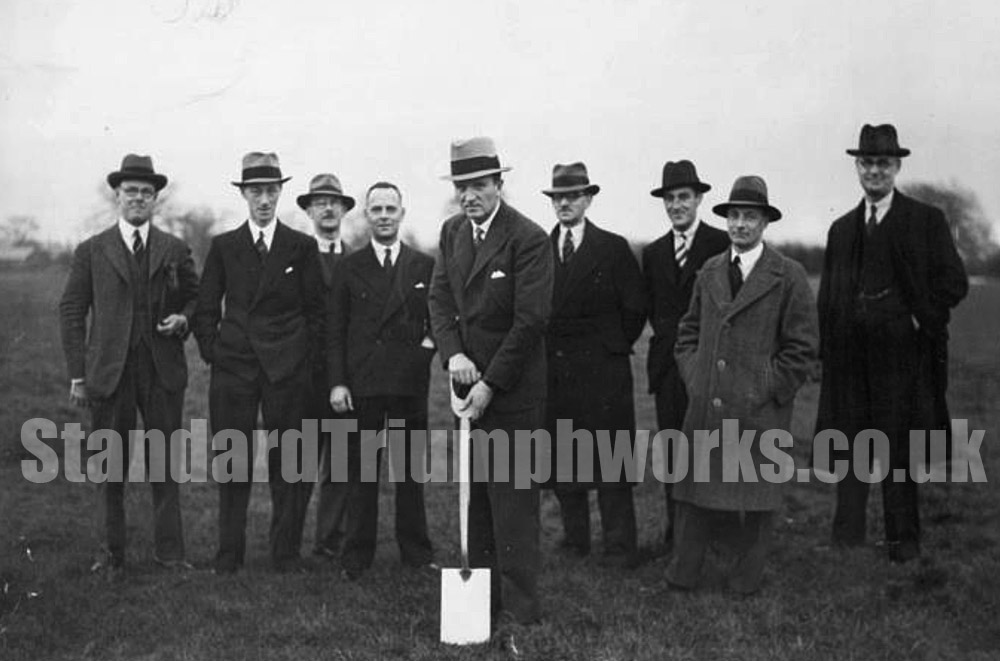
Let us compare the position of a man earning £10 a week under the new scheme, as against the £10 he earned previously. He then got about £2 guaranteed and the rest of his £10 was made up in bonus. If he worked on individual piecework and had a job for which he was paid 1/- a piece he would have to make 200 in a week, or forty a day, to earn his £10. The first forty would earn him no bonus because during that time he would be earning his basic rate, so that he did one day’s work without any bonus at all. Under the new scheme he is guaranteed £5 a week and assuming that, they paid him on an individual basis, which they do not, he would then get 6d for the job instead of 1/-, and he would earn bonus on the very first one he made. When he had made his 200 he would have his £10 in the same way. The difference between the two schemes is that one gives security and the other does not. Note also the benefit the Company has as soon as he makes 201, a benefit, which the employees are willing to give them in order to attain this security – which shows that security comes first in the mind of every worker.
The bonus scheme is very simple. They take the total number of man-hours planned for the production of a tractor, as a target. At the end of each week they calculate the total number of man-hours worked by the employees and divide them by the number of tractors produced – the result being the actual man-hours per tractor for the particular week. We then express the actual as a percentage of the target and the result is the percentage bonus payable. For example, if the planned hours for the tractor were 100 and the actual hours taken were 110, the bonus is about 90 per cent. Each week then every employee gets his base rate, plus a bonus which is whatever percentage of his or her basic rate is payable for the particular week. Every employee gets the same bonus, but as there are ten different base rates, there are ten variations of pay packet, assuming that the hours worked are the same. All employees, then, are provided with a common incentive – to produce as many tractors as possible in the lowest number of man-hours – or simply at a cheaper cost. Standard’s objective becomes their incentive.
Equally important, there is also complete flexibility of labour. In the event of shortages of any component due to plant breakdown or faulty material or illness, personnel can be transferred anywhere in the organisation so long as the jobs are within the same basic wage category. It is far more difficult to do this with piecework because there is always argument or negotiation about the rate when a new man is introduced on a job temporarily. The job may give him less money, in which case he does not like it, or yield him more, in which case when he goes back to his own job he is dissatisfied with it.
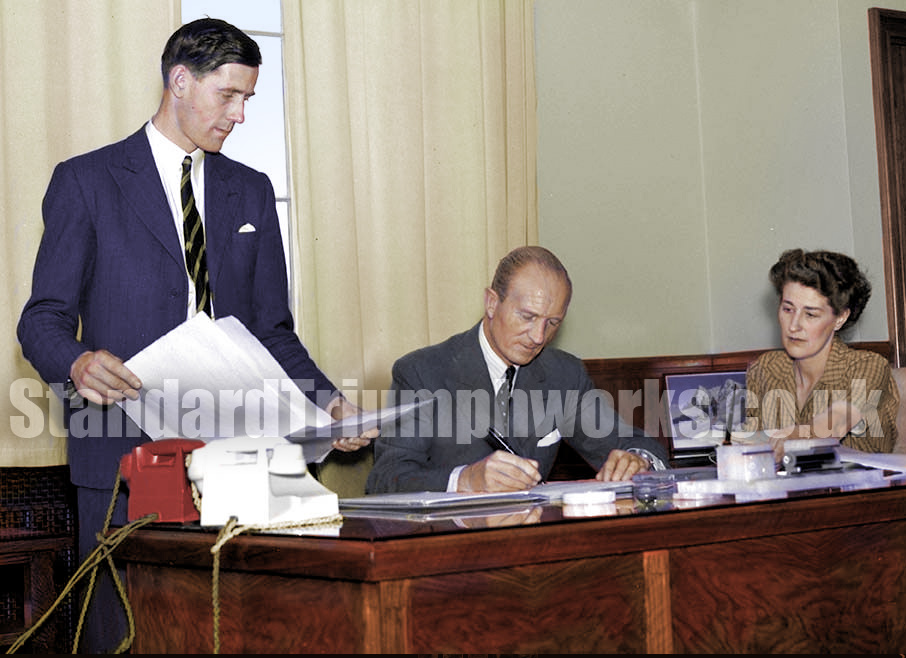
Industry, as Sir John pointed out, is interested in time, whereas individual incentives direct attention solely to a monetary basis and foster selfishness, the opposite of teamwork. Individual incentives also create endless negotiations and arguments between management and men, not because one man is unable to save the Company time, but because he does not get as much in his pay packet as his neighbour. Individual incentives also create unnecessary overheads by the need for large rate-fixing departments, and by the employment of a large staff to do the necessary paperwork systems, and for the calculation and payment of wages. In addition, they upset the flow of material and increase the work in progress because each individual is interested in his own operation and he often produces more than his neighbour engaged on the next operation can cope with, and stocks of partly completed components pile up. A manufacturer is interested only in the completed product or component. The scheme extends to personnel who are not directly employed on production; indirect workers and skilled workers, such as Tool Room, are paid the same bonus as the production workers, but as a result of their higher base rate they get more in their pay packet.
Since the introduction of their scheme, the productive man-hours per tractor have been reduced by some 15 per cent, likewise their non-productive man-hours per tractor. Result is a direct reduction in labour and overheads. In addition absenteeism is negligible, and their labour turnover is as low as 1/10th of 1 per cent. This figure they take as indicating the contentment of their employees. At Standard Motors they say they never fire men, they fire themselves, as a team has no use for the man who does not pull his weight.
When Sir John Black says he welcomes competition, he means it. To him competitive enterprise is what it says, and let them all come. He is confident that he can meet it. At the moment the German car is in the ascendant because Germany has none of our worries and frustrations over shortages of raw materials, but that will pass(Note: today BMW owns the Triumph brand name). Standard Motors think in terms of export. Before the war it was only 15 per cent, mostly to Australasia, today it is 80 per cent to some seventy-five different countries. With this volume going overseas they do not overlook service and spares. Immediately after Sir John’s recent extended tour of Brazil, Argentine, Uruguay, Canaries, Spain and Portugal, he had spare parts flown out. A tremendous spare parts organisation is being set up now in Liverpool, right on the docks for immediate shipping. Not only are the spare parts urgent but the mechanics who fit them are needed just as badly.
One of the troubles with this country as far as cars go, Sir John thinks, is that we are constantly developing old ideas instead of breaking away into something new. An entire break with the present idea of cars will come soon, altering our whole conception of suspension, braking, road adhesion, and general safety. He hopes Standard will be the first to think of it, but makes no promises.
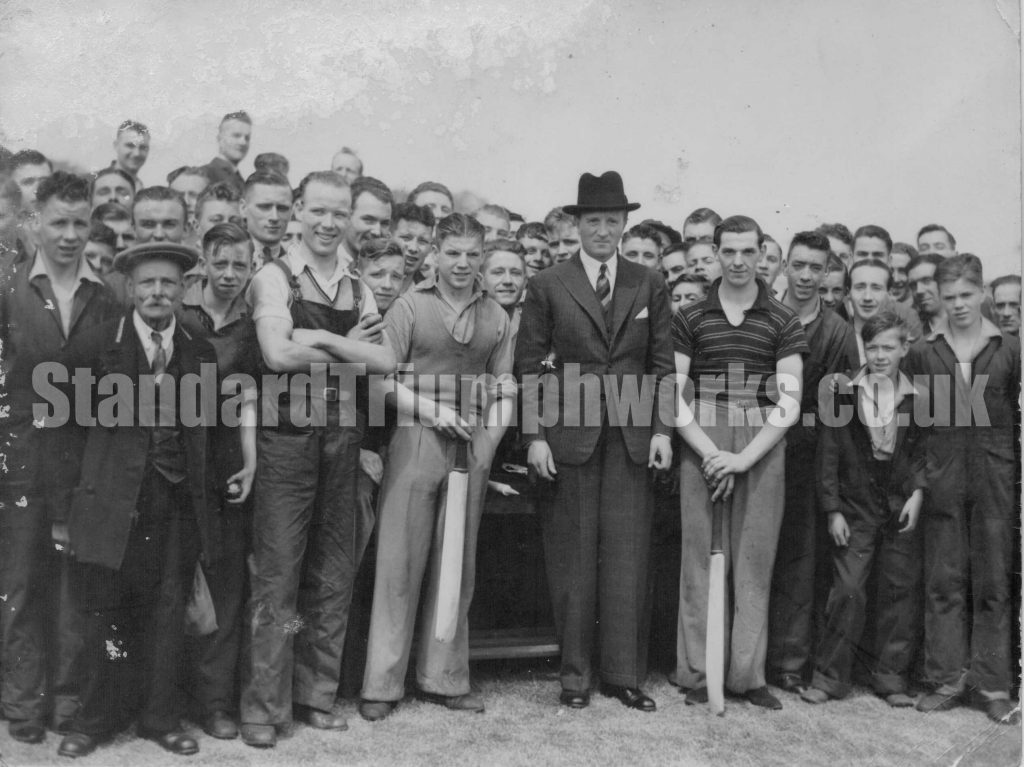
In his forthright and decisive way what interests him at the moment is increasing production on a national scale. He is convinced that the answer to higher output is the one they have given in their new wage scale incentive scheme, and being a patriotic as well as a generous person, he wants everyone to share it. The TUC will be the first people to agree because though at first they turned it down, they have seen how it works. “Put over nationally” says Sir John “most of our economic troubles would disappear almost overnight. Only ignorance prevents it from being adopted in every industry, including agriculture. If Great Britain would but adopt our system of payment, the country would be producing not the mere 15 per cent more they ask us for but 25 per cent and over. Think of it! Twenty-five per cent more coal and steel and we would balance our economy at home, and export on a sound economic basis.” Great sacrifices were made by many men at Standard Motors when the new rates came in, some dropping as much as £5 from their weekly pay packet. Only leadership of the highest quality could exact such sacrifices from the few for the good of the many. It proved that the young man who set out so eagerly twenty-four years ago to remove the fear of management, had done what he set out to do.
Olive Moore, 1951.
Sir John Black Obituary.
Management 1930
